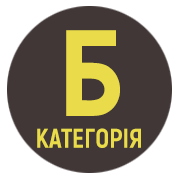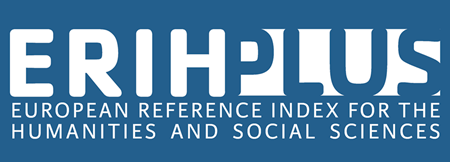THE CONCEPT «TRAITOR» IN THE UKRAINIAN PAREMIC VIEW OF WORLD
DOI:
https://doi.org/10.32782/folium/2025.6.18Keywords:
view of world, paremia, linguoconceptology, verbalizer, lexical-semantic meaningAbstract
The article deals with the features of the semantics and linguistics of the concept “traitor” in Ukrainian paremics. It is studied the analyzed concept in proverbs and sayings is objectified within a number of lexical-semantic groups, in particular “traitor to God”, “adulterer”, “traitor to a loved one”, “traitor who is guided by selfish motives”, etc. It is found the greatest condemnation in the context of the paremic picture of the world is deserved by apostates and those who betray their husband or wife. Many proverbs contain warnings about committing treason. In addition, advice is often expressed to remain vigilant with enemies, especially with those who were previously friends. It is established the verbalizers of the concept “traitor” in Ukrainian folk proverbs and sayings are individual lexemes, word combinations, phraseological units. Often the analyzed concept is objectified within the context. We have identified paremias-dialogues that implicitly represent betrayal, indicating the insidious, hypocritical nature of a selfish person prone to betrayal. Most often, the concept is verbalized using a proper name, characteristic adjectives such as “unfaithful”, “depraved”, “devil”, as well as a number of nouns. Among the latter, we distinguish a considerable group of zoonyms, with the help of which the effect of comparing a person committing betrayal with individual animals is created: a viper, a dog, a ram, etc., – as well as with mythological characters, such as a werewolf (in a number of proverbs this word is replaced by the euphemisms “dog skin”). A traitor who poses as a righteous person is compared to the devil in the paremia picture of the world. We have identified a number of antitheses emphasize a positive attitude towards honest people and a negative one towards traitors, for example: God / devil, angel / devil, angel / devil, righteous man / rascal. It is interesting the lexeme “moscal” is a synonym for the words “liar”, “traitor”, “insidious” in many proverbs and sayings. The analyzed concept is also objectified by the Ukrainian phraseologisms sound like “to jump into buckwheat”, “to warm a viper in one’s bosom”, “to hold a stone in one’s bosom”, which function as part of a number of paremias.
References
Вільчинська, Т., Бачинська, Г., & Вербовецька, О. (2023). Концепт «війна» в українській паремійній картині світу (до 95-річчя від дня народження проф. Л. Лисиченко). Лінгвістичні дослідження, 58, 3–16.
Голубовська, І. (2004). Етноспецифічні константи мовної свідомості [Неопубл. автореф. дис. д-ра філол. наук]. Київ. нац. ун-т ім. Т. Шевченка.
Голубовська, І. (2017). Універсальні та національно-специфічні константи мовної свідомості в дзеркалі паремій: Лінгвокультурологічний підхід. Одеський лінгвістичний вісник, 9 (3), 7–13.
Гольцева, М. (2019). Пареміологічна італомовна картина світу (міфологічна домінанта). Studia Philologica, 1, 51–55.
Кальмук, О. (2014, 9 квітня). Національна мовна картина світу та її зв’язок з пареміологічним фондом. Науковий блог. Національний університет «Острозька академія». URL: https://naub.oa.edu.ua/natsionalna-movna-kartyna-svitu-ta-jiji-zvyazok-iz-paremiolohichnym-fondom-2/
Коньок, О., & Руші, Дж. (2019). Засоби вираження оцінки в українських та індійських пареміях. У Соціально-гуманітарні аспекти розвитку сучасного суспільства (с. 134–139). Сумський державний університет.
Лисиченко, Л. (2009). Лексико-семантичний вимір мовної картини світу. Вид. група «Основа».
Ніконова, В. (2012). Концепт – концептуальний простір – картина світу: Досвід поетико-когнітивного аналізу художнього тексту. Вісник Київського національного лінгвістичного університету. Сер.: Філологія, 15(2), 117–123.
Номис, М. (Упоряд.). (1993). Українські приказки, прислів’я і таке інше. Либідь.
Словник української мови у 20 томах. (б. д.). Словник української мови online. Томи 1–15 (А-П’ять). URL: https://sum20ua.com/?wordid=0&page=0.
Слухай, Н., Снитко, О., & Вільчинська, Т. (2011). Когнітологія та концептологія в лінгвістичному висвітленні : Навч. посіб. Київ. нац. ун-т ім. Тараса Шевченка.
Сулейманова, Я. (2018). Аксіологічна семантика паремій з компонентами на позначення природних стихій: Вода, вогонь, повітря і земля (на матеріалі англійської, німецької, української та російської мов) [Неопубл. дис. канд. філол. наук]. Держ. закл. «Південноукр. нац. пед. ун-т ім. К. Д. Ушинського».
Юськів, Б. (2013). Паремійна картина світу: Проблеми дослідження. Studia Ucrainica Posnaniensia, 1, 67–73.











